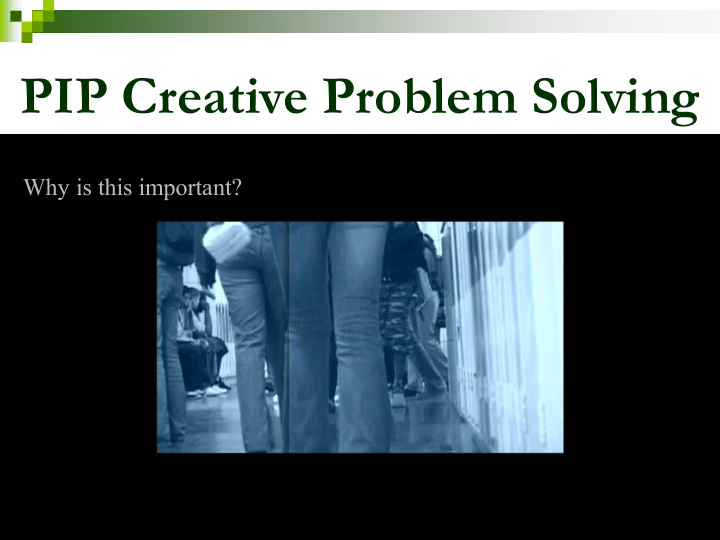



PIP Creative Problem Solving Why is this important? Video; Mike 2 minutes on referral Video:Why 1
Agenda • Introductions and objectives • Skills and knowledge of adolescent wellness can be taught and practiced routinely • Creative problem solving is an important element of adolescent wellness • There is a new tool that simplifies and accelerates creative problem solving • Learning the tool and solving a problem • Results • Debrief and evaluation 2
21 st Century Learning requires social and emotional (SEL) skills and knowledge The four C’s added to the 3 R’s are: • Critical thinking • Communication • Collaboration • Creativity 3
Life’s Balancing Act …balancing the weight of life’s worries with the relief of skills and knowledge Relief Worries • Problem solving • Family • Self-awareness • Friends • Connectedness • School • Communication • Work • Flexibility • Future • Humor • Optimism 4
Adolescent wellness skills & knowledge also prevent mood becoming depression clinical depression sad/angry/stressed …across all interests, over two weeks, with profound depth 5
Biopsychosocial Model of Depression Genetics Chemical imbalance Other medical disorders Bio Psycho Social Family Negative thoughts School Unhealthy coping skills Peers Lack of self-esteem Neighborhood Reilly, NN, Editor (2011). Break Free From Depression. Boston, MA: Children’s Hospital Boston.
Acknowledgement of PIP creators CHAPTER FOUR Supplementary Activities for Coping Skills Building 7
How Might… teens improve resiliency with Creative Problem Solving? • Risk factors associated with mental illness include poor problem solving skills, inability to generate alternative solutions, elevated levels of stress & poor coping skills • Adolescents suffering from depression view the environment as overwhelming, with obstacles that cannot be overcome, and as continually resulting in failure or loss • Teens can learn how to frame problems, create more options and become better problem solvers using Creative Problem Solving (CPS). Teens can recall this as a coping skill by asking oneself, ‘What has helped me feel more hopeful or successful’? • What’s Stopping Us… - is how to teach CPS to groups of 50 or more - in one class period of less than an hour! • Russ and Gloria…? 8
Start the 45 minute clock! 9
The teens said…. 91% learned something new!! 10
What did teens say was most helpful from Problem/Ideas/Plan? • PIP problem solving considered to be a worthwhile and important topic • Felt like they learned something new and useful- --breaking large problems into smaller pieces --acting within 24 hours as essential -- enlisting others’ help • Liked that group was open and accepting (deferring judgment!) • Learned how to use the skills and apply them to real life situations 11 • 79% felt that they would use it in the future!
What did adults say was most helpful from Problem/Ideas/Plan? • Convergent/Divergent steps, deferring judgment (11) • Importance of positive energy, creativity, collaboration in group setting (4) • PIP tool/worksheet, concrete process, nominal process (3) • Like the post it brainstorm and voting to choose ideas/stress-less choices (3) • Idea generation, concept of saying ideas aloud plus writing (2) • Using creative problem solving with large groups (2) • Breaking down goals into tasks that students can utilize 12 • Decision making
Acknowledgement of PIP Collaborators Nadja Reilly, PhD Freedman Center Massachusetts School of Professional Psychology www.warmlines.org Vanessa Prosper, PhD Swensrud Depression Prevention Initiative Children’s Hospital Boston www.breakfreefromdepression.com Barbara Green, PhD, and Kim Noble, RN, MBA Youth Health Connection South Shore Hospital www.southshorehospital.org/yhc 13
Debrief and evaluation For information on using PIP CPS to build the skills and knowledge of adolescent wellness, visit www.AdolescentWellness.org 14
Recommend
More recommend